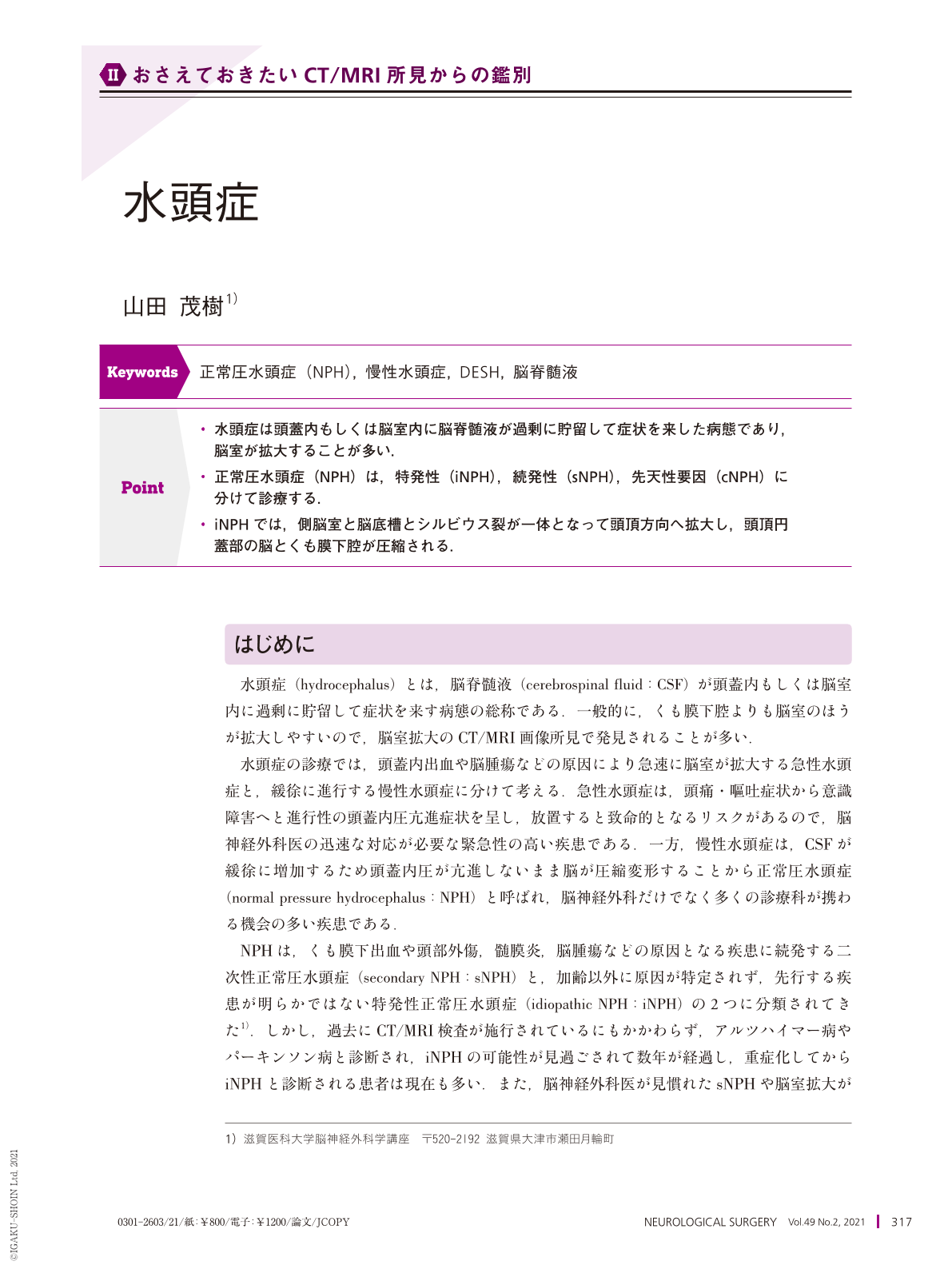Japanese
English
- 有料閲覧
- Abstract 文献概要
- 1ページ目 Look Inside
- 参考文献 Reference
Point
・水頭症は頭蓋内もしくは脳室内に脳脊髄液が過剰に貯留して症状を来した病態であり,脳室が拡大することが多い.
・正常圧水頭症(NPH)は,特発性(iNPH),続発性(sNPH),先天性要因(cNPH)に分けて診療する.
・iNPHでは,側脳室と脳底槽とシルビウス裂が一体となって頭頂方向へ拡大し,頭頂円蓋部の脳とくも膜下腔が圧縮される.
Hydrocephalus is caused by excessive accumulation of cerebrospinal fluid(CSF)in the ventricles or the skull. Unlike acute hydrocephalus presenting with elevated intracranial pressure, chronic hydrocephalus is called normal-pressure hydrocephalus(NPH). Because the CSF volume increases slowly, the brain compressively deforms without increasing intracranial pressure. NPH should be diagnosed and treated according to the following three categories: idiopathic NPH(iNPH), secondary NPH(sNPH), and congenital NPH(cNPH). The intracranial CSF distribution in iNPH differed from that in sNPH or cNPH. In iNPH, the Sylvian fissure and basal cistern were conspicuously enlarged, whereas the convexity subarachnoid space was severely decreased. CSF distribution in the subarachnoid space specific to iNPH is known as “disproportionately enlarged subarachnoid space hydrocephalus(DESH),” which might be due to direct CSF communication between the lateral ventricles and the basal cistern at the inferior choroidal point of the choroidal fissure. After shunt surgery in a patient with NPH, the lateral ventricles and Sylvian fissure shrank from top to bottom, while the convexity subarachnoid space expanded. In NPH, except for obstructive hydrocephalus, the flow void sign on spin-echo T2-weighted images is usually observed around the aqueduct, which reflects the increased CSF movement.

Copyright © 2021, Igaku-Shoin Ltd. All rights reserved.


